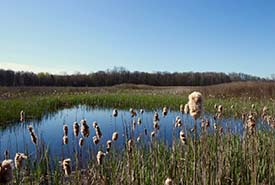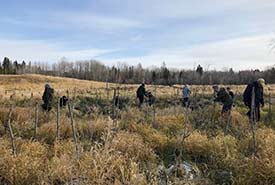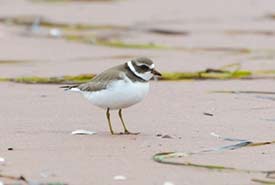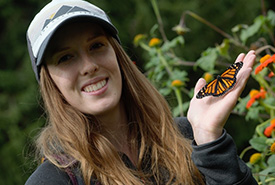A call to action: The United Nations Decade on Ecosystem Restoration

A restored wetland in Norfolk, ON (Photo by NCC)
Earlier this June, on World Environment Day, the United Nations kicked off the Decade on Ecosystem Restoration, lasting from 2021 to 2030. The goal of this global movement is to “prevent, halt and reverse the degradation of ecosystems on every continent and in every ocean.” It could not have come at a more critical time, as humans have modified 77 per cent of terrestrial land (excluding Antarctica) and 87 per cent of oceans, globally.
When you hear “ecosystem restoration,” you may think of planting trees, but there are many more restoration activities that are essential to recovering degraded ecosystems. For example, in grasslands, restoration may entail removing invasive woody species that are encroaching on native grasses. In rivers, it is critical to remove or redesign dams that are fragmenting the movement of aquatic animals to improve river connectivity. A staggering 85 per cent of the world’s wetland area has been lost; restoration of this ecosystem involves rewetting the land.
Why a decade? Because that’s how long scientists say we have to build a better relationship between humanity and the nature that sustains us before we reach a tipping point. We are facing twin crises of biodiversity loss and climate change. Human well-being is also tied to the health of our planet. Ecosystem restoration is essential to ending the biodiversity crisis, meeting global climate goals and improving human well-being.
The World Wildlife Fund’s 2020 Living Planet Report showed a 68 per cent decline in vertebrate species populations around the world since 1970, and the Living Planet Report Canada revealed a 59 per cent decline in the populations of Canadian species at risk over the same time period. Restoring degraded habitats to healthy ecosystems will directly contribute to the recovery of biodiversity at a time when it’s never been more urgent.
Ecosystem restoration is also critical to limiting global warming to below 1.5 C. Restoration could remove up to an estimated 28 gigatons of CO2 from the atmosphere through carbon sequestration and storage. And we’re not just talking about forests. Grasslands and wetlands also sequester an incredible amount of CO2.
Not only does being in nature feel good, but the livelihoods of people around the world depend on intact ecosystems (e.g., farmers, fishers). Healthy ecosystems provide many additional co-benefits to people, helping us prosper. They are more resilient against natural disasters, mitigate flood and drought risk, reduce soil erosion, provide clean water and ensure food security. Yet 40 per cent of the world’s population is negatively affected by ecosystem degradation.

Volunteers plant trees at Bunchberry Meadows, AB (Photo by NCC)
So, what is the Nature Conservancy of Canada (NCC) doing to contribute to the UN Decade on Ecosystem Restoration? We have restoration projects on properties across the country, from forests to wetlands to grasslands to coastal areas. In Alberta’s Aspen Parkland region, we’re planting native trees to maintain habitat both for biodiversity and the humans who come to enjoy the trails. In Quebec, we’re restoring wetlands to benefit several bird and turtle species at risk. In Manitoba, we are restoring and connecting native grassland by removing invasive woody species encroaching on the grassland and planting native grasses and wildflowers. In Atlantic Canada, we’re restoring coastal ecosystems so that they are more resilient against climate change and sea level rise. Our work will continue throughout the UN decade and beyond.
What can you do to contribute?
- Clean up trash along a river or coast.
- Plant native vegetation in your community.
- Commit to Small Acts of Conservation.
- Support local restoration initiatives through volunteering or donation.
- Spread the word about the decade on restoration to your friends or community.

Beach clean-ups can help species at risk such as the piping plover (Photo by Sean Landsman)
Read the Ecosystem Restoration Playbook to learn more about joining #GenerationRestoration through your actions, choices and voices. You can also follow along and read the latest news.
It is easy to feel overwhelmed by the state of the environment and the task at hand. Yet I am feeling so energized by this global movement dedicated to healing the planet. Sometimes it feels like the actions of one are insignificant, but we all have a role to play to make peace with nature. It’s our shared responsibility and together we are going to do wonders. What will you do to contribute?


